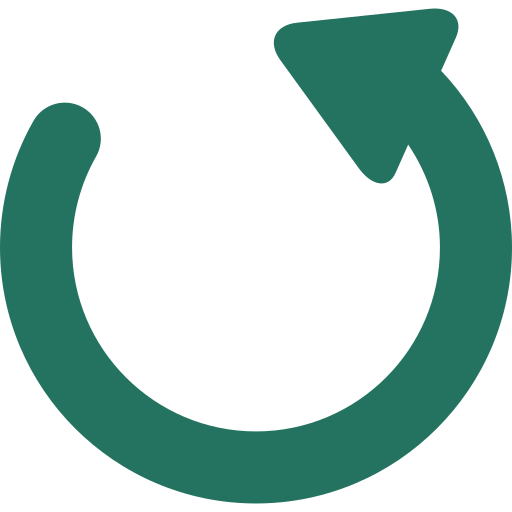

2 Lac + Happy Patients
Best Hernia Hospital in India As Per Google (4.9) ★★★★★
International Excellence Centre for Hernia by Dr John Murphy.
Ultramodern Infrastructure for Hernia
Experienced and skilled surgeons
Topmost Referral Centre for Complex Hernias
Discover Proflor - a novel and innovative method for hernia repair that ensures a safe, swift, and painless day-care procedure. Contact our expert doctors for more information.
A hernia is a condition where an internal organ, such as the intestine or fat, protrudes through a weakened or sensitive area in the abdominal muscle or tissue.
Various types of hernias can manifest in individuals. Commonly, Inguinal hernias, Hiatal hernias, umbilical hernias, and femoral hernias are diagnosed during routine body checkups by our hernia specialists at HHC Gurugram. If you suspect that you have a hernia, it's crucial to consult a Hernia surgeon in Gurugram, as hernias do not resolve on their own, and neglecting them can lead to complications, including hernia strangulation, which can be life-threatening.
Hernias can affect anyone, irrespective of age or gender. According to studies, 1 in 10 people experiences a hernia at least once in their lifetime. Occasionally, infants may also present with a hernia. Hernia surgery in Gurugram is recommended and is globally administered to millions of hernia cases each year.
Here is a brief overview of some common types of hernias. While there are other less common types, they fall outside the scope of this information.
Hernia diagnosis typically relies on a clinical approach, involving a comprehensive review of your symptoms and a brief physical examination by your doctor. During this examination, the doctor may assess the bulging area by elevating your abdominal pressure, often achieved by having you stand or cough. This maneuver enhances the visibility of the hernia. Specifically, for inguinal hernias, the doctor may explore potential pathways by examining along your scrotum. In the majority of cases where there is an evident swelling in the groin or abdominal area, increasing in size during activities like standing, straining, or coughing, a clinical diagnosis of hernia is established, and no additional tests are typically required. However, more complex diagnoses are best conducted by hernia specialists.
Treatment for a hernia is determined by its characteristics, its effect on your quality of life, and your overall health. Options may involve observation, the use of supportive devices, or surgery. Surgery is the definitive method for hernia repair, and in certain instances, emergency surgery may be necessary. The most suitable treatment option will be decided through a discussion between you and your surgeon.
Indications for hernia repair surgery include :
A) Laparoscopic Repair
Laparoscopic repair involves creating small incisions on the abdominal wall through which instruments are introduced into the abdominal cavity. The abdomen is inflated with air, and the repair is guided by a camera. The hernia contents are repositioned into the abdominal cavity, and a mesh is securely placed to cover the hernia defect from the inside. This mesh aids in preventing recurrence. Laparoscopic repair offers advantages such as faster recovery, reduced pain, and a lower risk of infection.
B) 3D Mesh Hernia:
A mesh serves as a supportive structure to reinforce hernia repairs by covering the defect and minimizing tension in the repair, which can otherwise result in hernia recurrence.
The mesh is typically crafted from synthetic materials like polypropylene or polyester. Alternatively, a biologic graft derived from animal tissue may be used as the mesh. Biologic grafts are often chosen when infection is a significant concern, as they demonstrate resistance to infections.
C) Open Repair
The open repair represents the conventional method for hernia repair surgery, involving an incision made over the hernia site. The hernia contents are repositioned into the abdominal cavity, and the sac is excised. Depending on variables like hernia location and size, a mesh is frequently employed to address the hernia defect. Alternatively, the defect may be closed using sutures.
The open approach is typically applied for substantial hernias or those complicated by factors like bowel obstruction, infection, incarceration, strangulation, or recurrences.
D) How to know which hernia treatment option should you choose ?
The choice between laparoscopic and open approaches for hernia repair surgery, as well as the decision to use mesh or not, will be personalized according to the specific characteristics of the hernia and the consultation between you and your surgeon.
| Particulars | Open Surgery | Laparoscopic Surgery (HHC) | 3D Mesh Hernia Repair |
|---|---|---|---|
| Cuts | 8-10 cms | <10 mm | <10 mm |
| Scars / Stitches | Yes | No | No |
| Pain | Painful | Virtually Painless | Virtually Painless |
| Infection | Higher Chances | Lower Chances | Lowest Chances |
| Complications | Higher Chances | Lower Chances | Lowest Chances |
| Hospital Stay | 4 - 5 Days | 1 Day | Same Day Discharge |
| Recovery Period | 3 - 4 Weeks | 4 - 5 Days | 2 - 3 Days |
Healing Hands Clinic stands out as the premier facility for advanced hernia treatment, offering state-of-the-art infrastructure and expertise to cater to the needs of fellow citizens in Gurugram, India.
Distinguished as the sole Hernia treatment center in Gurugram, our lead surgeon boasts over 10 years of experience and expertise in hernia treatment, specializing in advanced 3D Mesh Hernia Treatment. Following hernia operations, our dedicated team of hernia specialists, led by our renowned surgeon, provides comprehensive guidance and support until your hernia is completely resolved through the 3D mesh repair method, ensuring a hernia-free life.
Healing Hands Clinic holds the distinction of being the only hernia center in India accredited by the National Accreditation Board for Hospitals & Healthcare Providers (NABH) and recognized as a Training Center for Hernia in India, licensed and certified by the Maharashtra University of Health Sciences (MUHS). Having trained over 100 Hernia Specialists globally, the center is hailed as a hub of excellence, attracting doctors from Europe, the Middle East, and Asia for training.
Smoking has the potential to induce a chronic cough through lung irritation, as previously mentioned. Prolonged coughing, as discussed earlier, can be a contributing factor to the development of a hernia and may even lead to hernia recurrence after surgery. Additionally, the nicotine present in tobacco weakens the abdominal wall, further contributing to the formation of a hernia.
Every surgical procedure involves inherent risks, with the most prevalent being bleeding and infection. Individuals with specific medical conditions such as diabetes, smokers, alcoholics, and the elderly may face higher risks. The likelihood of bleeding is minimal when the surgery is performed by a specialist, and infection is mitigated through the careful administration of antibiotics. Recurrent hernia, where the hernia returns after surgery, is another challenge. However, a thorough comprehension of the condition, elimination of causative factors, and utilizing cutting-edge techniques in re/pair can substantially reduce the recurrence rate.
It's akin to a brief nap! You'll only experience a minor needle prick during your pre-procedure preparation. Typically, the surgery lasts around 20 minutes. In some instances, only the specific area with the hernia is anesthetized, and you may be conscious, engaging in conversation with your doctor.
The anesthesia effects will diminish within 2-3 hours post-surgery, allowing you to gradually regain movement in your limbs. Refrain from oral intake for 4-6 hours after the procedure. Subsequently, you can commence with sips of water, followed an hour later by a regular full diet, unless advised otherwise (in a few instances, resuming a regular diet might be delayed for a day). Initially, there may be difficulty in passing urine as the anesthesia wears off, but this normalizes, and you will be able to urinate as usual. Mild post-surgery pain is anticipated, easily alleviated with painkillers.
If your surgery is scheduled as a day care procedure, you can be discharged once the effects of the anesthesia have subsided, you've urinated, and you feel comfortable eating and drinking. As a general anesthetic is commonly employed, it is recommended that a responsible adult accompany you home and stay with you for 24 hours. In some instances, you might receive discharge instructions after 24 hours, but if required, you may need to spend a night in the hospital. Before discharge, you will receive guidance on post-operative care, pain relief, and antibiotic usage.
The recovery period is not uniform and varies based on factors such as the hernia type, its extent, your overall health, the surgical procedure, and the skill of the surgeon. As previously mentioned, in many cases, you can expect to be discharged within the same day or 24 hours. Initially, there might be some discomfort while walking, using stairs, or moving, but this can be effectively managed with painkillers. Typically, you should experience relief from pain within a few days.
You can usually return to your regular activities as soon as you feel comfortable, but the timing may vary based on the nature of your work and your usual activity level. Individuals with sedentary jobs may resume work within 3-5 days, while those with physically demanding jobs or involving heavy lifting may need 4-6 weeks for recovery. It's advisable to consult with your surgeon to determine the most appropriate timeframe for your specific situation.
Fever exceeding 101 degrees Fahrenheit
Pain that persists despite taking prescribed medications
Unusual bleeding
Persistent nausea or vomiting
Healing Hands Clinic,
Spaze ITech Park Tower C, Ground Floor, Unit no 06, 07 and 08 Sohna road, Sector 49, Gurugram, Haryana 122018.
Healing Hands Clinic,
1st Floor Sheetla Chamber, Old Delhi Road, Opposite Air Force School, Sector 14, Gurugram, Harayana 122002.












